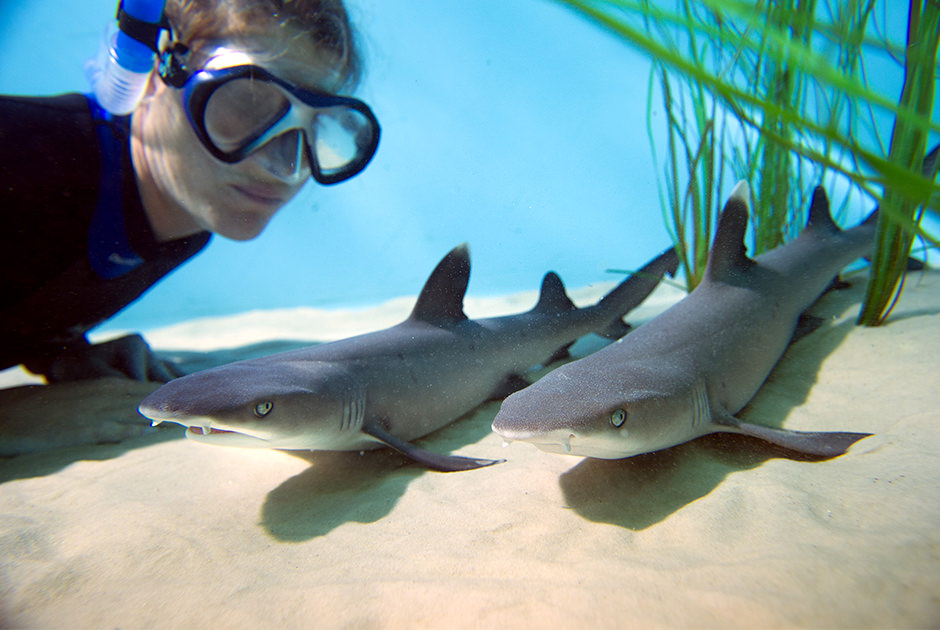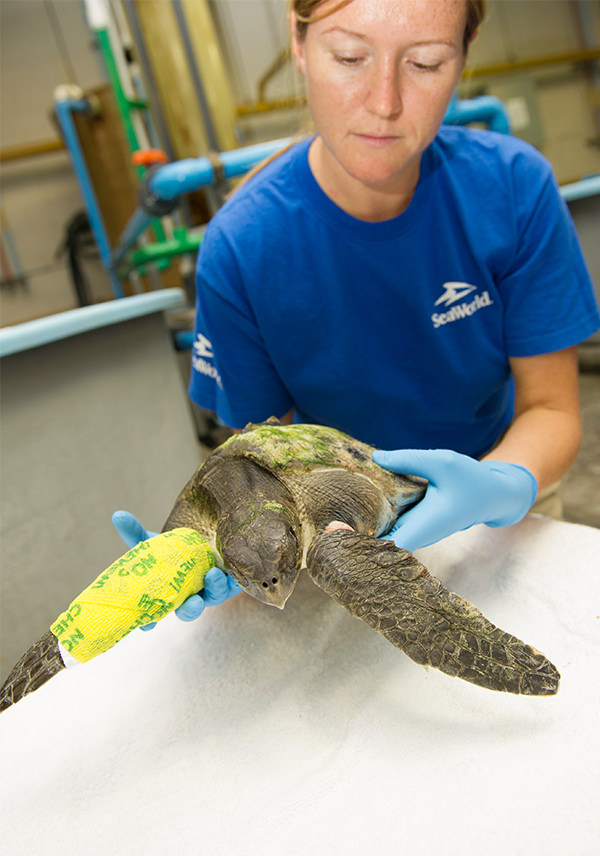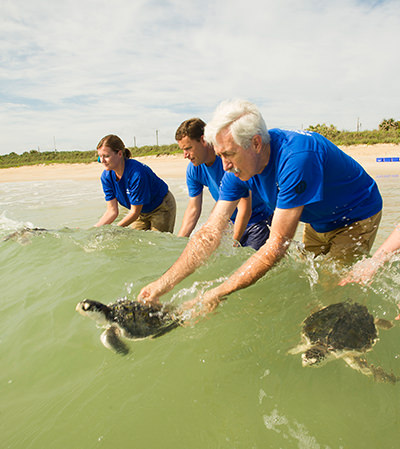Aquarium Department
Members of the Aquarium department are responsible for maintaining all exhibits and systems for fishes, invertebrates, amphibians, and reptiles such as sea turtles and alligators. At Busch Gardens Tampa Bay, exhibits which house amphibians are under the management of the Herpetology department, which cares for such animals as Gila monsters, American crocodiles, pythons, Galapagos tortoises, and tree frogs. With previous experience, the entry-level position in this department is an aquarist. As experience is gained, however, there are more opportunities in supervisory and management positions.
Positions
Curator of fishes
Main job duties:
The Curator of Fishes manages the department so that the daily goals meet the long-range goals of the institution. The curator acquires new animal specimens, maintains an inventory of the collection, and monitors dietary habits of the animals. Responsible for all animal scientific research programs of the department, the curator also assists with the design and development of animal transportation methods and equipment, and consults on the design of new animal exhibits, working with contractors during the construction process. This position also participates in Education programs related to the department.
Education:
Bachelor's degree or equivalent in biological sciences; scuba certification.
Inital training:
Ten years experience, seven of which are at a managerial level, are required.
Works closely with:
Aquarium Supervisor, Water Quality department, Mammal and Aviculture departments, Education department, Graphics department, and Design and Engineering department.
Challenges:
Long hours are required to accomplish all the things a curator does. One of the biggest challenges of this curator involves the development of innovative water filtration processes. He or she is also often required to travel on short notice and for extended periods to meet with other zoological professionals, to collect specimens from the field, and when transferring animals from one park to another.

Aquarist -- Supervisor of aquarium
Main job duties:
The supervisor position is responsible for guiding the aquarists in the daily operation of the department. In addition to preparing work schedules, the supervisor monitors exhibits, trains new employees, observes aquarists in action, and prepares work reviews for staff members. Supervisory duties also involve maintaining a current inventory of animal food and assisting in veterinary treatments.
Education:
Bachelor's degree or the equivalent in biological sciences; scuba certification.
Initial training:
A minimum of two years (usually more) experience in the Aquarium department is required.
Works closely with:
Curator, aquarists, Water Quality department, Mammal and Aviculture departments, Education department, and Payroll department.
Challenges:
The Aquarium Supervisor must maintain accurate records, as well as manage and direct personnel so that animals receive proper care.

Aquarist
Main job duties:
The responsibilities of this entry-level, but essential, position include maintaining all park aquariums and habitats, preparing and distributing food to fishes, invertebrates, amphibians, and reptiles. Aquarists monitor animal health and assist veterinarians with medical examinations. They maintain careful records on nutrition, behavior, and water quality, as well as keep displays clean, and set up new habitats. Aquarists also assist in the rescue and rehabilitation of turtles and other reptiles.
Education:
Associate's or Bachelor's degree; scuba certification
Initial training:
An aquarist should have a number of years of experience taking care of aquatic species, either as a dedicated hobbyist, or by working in an aquarium store. An understanding of basic chemistry concepts and plumbing skills are also helpful.
Works closely with:
Other aquarists, laboratory staff, Education department, and Water Quality department
Challenges:
An aquarist must prepare and distribute the correct type and amount of food for each species. Food preparation and habitat cleaning involve hours of strenuous daily physical activity, including heavy lifting. Aquarists must be aware of water chemistry and work with their supervisors to maintain proper balances. Learning the needs of each species, maintaining environments at high quality, and spotting health problems early before they spread to other animals in a display, are vital, daily challenges.

Profile

Gary Violetta
Curator of Fishes - Sea World Orlando
What's the most exciting part of your job?
The most exciting part of my job is building new habitats, starting from the conceptual stage through the final completion. The best part of this is hearing all the great comments from the park guests about the aquarium or the animals on display.
What do you want to get involved with next?
The next step for the aquarium department is to become more involved in the reproduction of certain targeted animals. These animals include sharks, rays, jellyfish, and a few fish.
What was the most unexpected part of your job?
That it's harder than it looks. I never just have one problem to solve, I'm constantly juggling.
What advice do you have for young people who would like to do what you do?
Get as much education as possible, especially in sciences, and use lots of "stick-to-it-ness" as you pursue your career.



